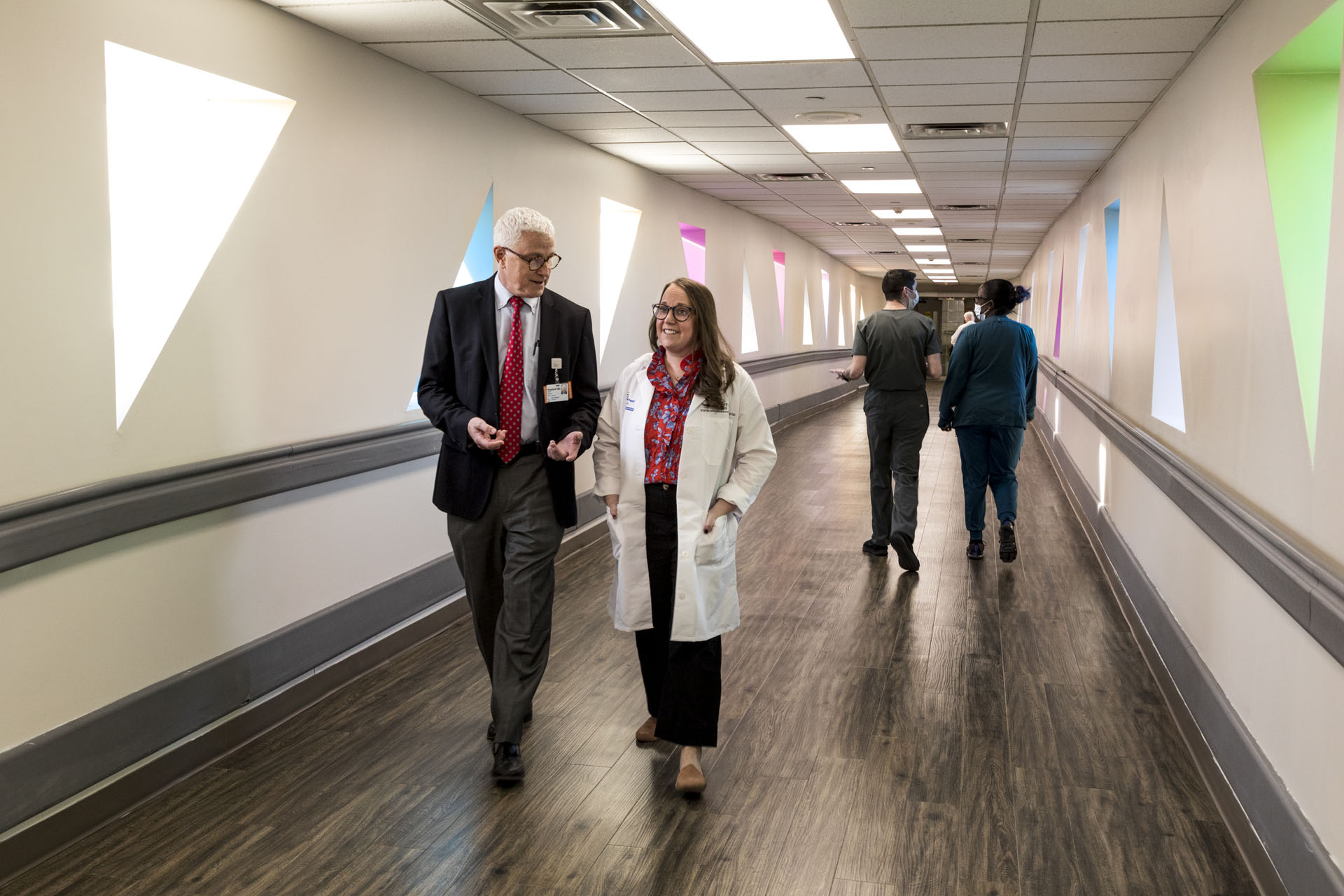WITH OBESITY RATES ON THE RISE, THE DYNAMIC TEAM AT SIUH’S COMPREHENSIVE WEIGHT LOSS CENTER IS EMPOWERING STATEN ISLANDERS TO TAKE CONTROL OF THEIR HEALTH THROUGH ADVANCED, HIGHLY INDIVIDUALIZED CARE AND SUPPORT – THROUGHOUT EVERY STEP OF THE JOURNEY
BY AMANDA MCCOY • PHOTOS BY AMESSE PHOTOGRAPHY

Over the past decade, the conversation surrounding obesity has shifted. Up until 2013, it was defined by the American Medical Association as a major public health issue, but after examining decades of medical research and mounting evidence, AMA members voted to reclassify obesity as a complex, chronic disease. Today, 40% of U.S. adults and one in five children are considered obese, defined as a BMI of 30 or higher (per data from the Centers for Disease Control and Prevention), and many are at risk of developing additional life-threatening diseases, such as diabetes, coronary heart disease, and cancer. “It’s a highly complex disease,” noted John Angstadt, MD, medical director of the Comprehensive Weight Loss Center at Staten Island University Hospital.
Tapped to lead the depart-ment last August, Dr. Angstadt and his team of two fellow-ship-trained surgeons are working to offer patients with obesity a path forward through a suite of leading-edge surgical and nonsurgical treatment options, along with the support, counseling, and guidance necessary for battling the chronic (and often sensitive) disease. “Obesity is not about will power,” he explained. “When a person develops a BMI above 30, the body undergoes meta-bolic and hormonal changes that make it impossible to maintain weight loss. When you lose weight with a diet, your basal metabolic rate drops by 25-30% and it does not come back. We are creating a place where patients feel comfortable to come in and seek the treatment they deserve.”

The team takes a multidisciplinary approach to care, noted Dr. Angstadt, examining all aspects of a person’s health before, during, and after any treatment is administered. Every patient will see a psychologist, nutritionist, and gastroen-terologist, and depending on their personal health reports, some might see additional specialists.
“Patients need to know the system works for them,” said Dr. Angstadt. “I’m behind the curtain making all the pieces work; they are not being bounced from one physician to another. I don’t like surprises in the OR. We need to know in advance if there are any additional health issues. It’s a highly individualized process. If a patient presents with a history of clotting disorders, for example, they are referred to a hematologist, while a patient with diabetes might see a nephrologist to look for any potential kidney issues.”

For patients who require surgical intervention, the team offers two types of weight loss procedures: gastric bypass and sleeve gastrec-tomy. The latter, which accounts for 75-80% of the surgeries performed at the center, is a laparoscopic procedure that condenses the stomach from 1,200cc down to 120cc while not affecting vitamin or nutrient absorption. In addition, it also eradicates nearly 90% of a person’s ghrelin cells (known as the hunger hormone) so they don’t struggle with chronic hunger. Dr. Angstadt said patients can typically expect to lose between 100-150 pounds.
There have been several recent advancements in medicine for weight loss care, noted Dr. Angstadt, offering an alternative for patients who aren’t eligible for or don’t elect to undergo surgery. The drug Mounjaro, for example, is a novel dual-tar-geted injection recently approved by the FDA to improve blood sugar control in patients with Type II diabetes, but it also shows great promise for patients with obesity. “It hits your appetite center in two places,” noted Dr. Angstadt. “It’s only a once-a-week injection, as opposed to a daily injection. We are hoping it will be approved by this summer.” Born into a family of nurses, Dr. Angstadt graduated from Jefferson Medical School before joining the U.S. Air Force to serve as a transplant surgeon.

He was drawn to the complexity of the practice, which he noted shares many similarities with bariatric care. “Weight loss surgery is a reflection of what I was doing in transplant surgery,” he said. “It’s highly complex and involves habit change, motivation, multiple consultants, and substantial follow up.” Over the next two decades, he would help build world-class weight loss programs in the South and Northeast, each time earning a Center of Excellence designation. Upon joining SIUH last year, Dr. Angstadt’s goal was to reduce the amount of time between a patient’s initial consultation and treatment. He’s been able to take a six-month timeframe down to eight weeks, with plans to make it even shorter.
“Most patients have been thinking about undergoing treatment for about two to three years before I ever see them,” noted Dr. Angstadt. “So when they finally seek treatment, they are ready immediately. One of my duties is figuring out how I can make the process faster and more efficient for them. Six weeks is our goal.”
He also touted the collaborative and highly engagedoffice environment, which includes a team of specialists in nutrition, psychiatry, internal and pulmonary medicine, rehabilitation, and social work, all working together to makethe process supportive and efficient. In another effort to streamline the patient experience, Dr. Angstadt recently implemented a new system to make all care information more accessible.
“After we meet with the patient one on one to share all care information and answer any questions, we give them a supplemental video with all the same content: discharge instructions, pre and post op protocols, etc.,” he explained.
“They can then pull it up on their phones anytime they need access the instructions. It will never replace the individualizedvisit, but it’s another way to arm our patients with all the tools and support they need on their journey.”
